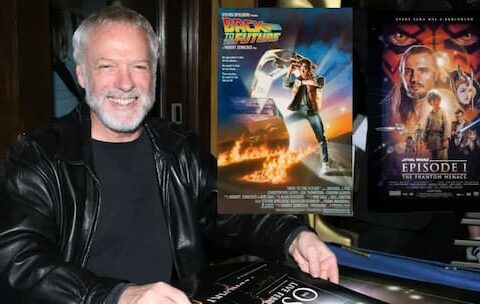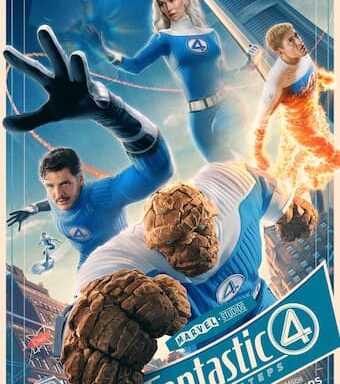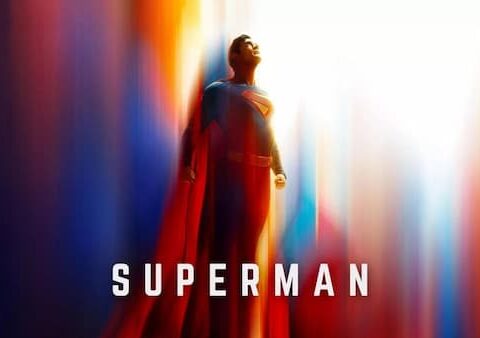I can’t overstate how much I’ve enjoyed reading this volume of the monthly Darth Vader title.
It isn’t just consistently the best Star Wars title out there, but it’s one of the three or four comic-book titles in general that I get excited about every time.
It’s been that good. My review of the first six installments of this title is here, including the beginning of this Jocasta Nu storyline (or ‘Legacy’s End’, as it’s being labelled).
As the series progresses, there are one or two things here and there that perhaps could be questioned or that I don’t entirely feel right about (and which I’ll get to in due course): but, in the broad strokes, the storytelling and the character work in this series is just superb, proving again that – when it comes to the comic book medium, at least – there appears to be no one in the Star Wars galaxy more compelling than Darth Vader.
The focus on Jocasta Nu in the arc that gets going in Darth Vader #6 is a prime example of Star Wars storytelling at its best – and of what Star Wars comics should do.
Here we have a pretty minor character from the prequel films (she was in one scene in Episode II) being fleshed out and made into a much more pronounced character, tied in to the Darth Vader story and set beyond the cinematic timeline of the prequel era.
As a result of these comics, Jocasta Nu now feels like a much more meaningful, significant character – rather than just the grouchy archivist in the Jedi library. This story, over several installments, breathes additional new life into the prequels and into Star Wars mythology – and that’s precisely what I want from titles like this one.
In Darth Vader #7 we find Jocasta Nu in a hideaway somewhere remote, where she has what appears to be a small base. She has one helper and is living an isolated life – as we must assume all Jedi who survived Order 66 are forced to do (Yoda and Obi-Wan being no exceptions). But she hasn’t given up hope: we find her compiling ‘teaching’ holocrons into a new archive. Her purpose is to provide teaching, knowledge and guidance to future generations of Jedi.
It’s a terrific premise: and a poignant thing to find Jocasta doing at this point in the timeline. As it goes on, we actually learn that this isn’t just meant to be a library, but a school.
There are lots of really nice details here: the sight of an old (yellow) Jedi Starfighter in her hideaway, for example, really helps you connect visually with the sense of the prequel era having these scattered remnants in various hideouts in the galaxy.
As the narrative progresses, however, the plot takes surprising twists and the stakes take on a different context to what we might first expect. Rather than wanting Vader to hunt and outright kill Jocasta Nu, the Emperor wants the old Jedi archivist brought safely to him as a prisoner. Jocasta, Palpatine explains, “knows everything”: as a meticulous Jedi archivist, she knows many secrets, locations, significant Jedi and Sith artefacts and sites of interest, etc.
The information she possesses is priceless. Palpatine also suggests she is hiding one particular as-yet-unspecified secret somewhere in the Jedi Temple.
This leads to the great line from the Emperor to Vader “You must find Jocasta Nu… and save her life”. This is a great twist, subverting our expectations of where this was going. It sets up the hunt for Jocasta Nu in a really interesting, dynamic way: and it also sets up Vader being in conflict with the Inquisitor and his team, who will think the mission is to kill Jocasta Nu.
This is all really good set-up and also great storytelling in the meantime. The fact that Jocasta isn’t in fact in hiding but is shown arriving on Coruscant makes things even more interesting.
Which is where we pick up in Darth Vader #8, with Jocasta infiltrating the Jedi Temple and managing to sneak back into her old place of work – the Jedi library. Seeing her in the library, even sneaking passed a Grand Inquisitor who is engrossed in old Jedi texts, is wonderful material: even more so seeing her sneak back into what we realise is a secret, hidden chamber within the complex and where she kept some of the most important, valuable objects, archives and artefacts.
I love all of this: I love that the Emperor and his people haven’t yet discovered this hidden chamber, I love that there is a hidden section at all, I love that Jocasta left a special droid guarding the chamber – and that the droid is still there, waiting for her return.
This all adds subtle new layers to the mythology of the Jedi Temple, the events of Order 66 and Anakin’s attack on the temple in ROTS, etc.
It’s enticing to see these little glimpses of unknown objects and treasures visible as Jocasta walks through the chamber. It’s also fascinating that we learn what Jocasta’s real purpose was in coming to the Jedi Temple and risking capture: to retrieve a database of every known Force-sensitive child in the Jedi records – so that they can be sought out in the future and become the rebirth of the Jedi.
It’s a great reason for her being there: it also shows us that the few, various Jedi scattered about the galaxy after Order 66 haven’t surrendered, but are still making plans for how to restore the Jedi. While the likes of Yoda and Obi-Wan (who Jocasta probably doesn’t know have survived, just like they probably don’t know about Jocasta) are patiently waiting for Luke Skywalker to come of age, Jocasta is looking for the next generation of Force-sensitive children.

It’s also kind of funny that Jocasta could’ve easily snuck back out and avoided detection by an incompetent Grand Inquisitor: but instead she wilfully ignites her lightsaber and attacks him. Why? Because he was disrespecting books in the archive by tossing them over his shoulder!
You could argue this is a dumb move on her part: but it’s also perfectly in keeping with the three seconds of Jocasta Nu we saw in Attack of the Clones – this archive is her life, is everything to her. To have some imposter disrespecting her former property would be enough to trigger her outrage like that.
As the next installment will show, it was obviously a mistake on her part though.
What also continues to be good here is how we’re getting a real sense of the stages of Darth Vader being revealed to other people in the Empire. This is a really good insight into that period between ROTS and the OT era: Vader wasn’t just immediately introduced to everyone by the Emperor. He was clearly kept with a low profile and, as we now see, gradually sent out into the open. But most imperial officers still don’t know who he is: and have no idea he even has powers, letalone that he was Anakin Skywalker.
It’s all really good stuff, which fleshes out some of the grey areas in the mythology.
Darth Vader #9 picks up with Jocasta in combat with the Grand Inquisitor in the Jedi library.
It’s a really good sequence, both for the dialogue and for the setting. You can’t help but think back to the Jedi library as we knew it in Attack of the Clones, but then also to think about the Inquisitor’s stories in Star Wars Rebels and then also to think again about Order 66 and ROTS. In just one sequence, so much is called back to or evoked and so much comes into play.
The Inquisitor’s anger at Jocasta – on account of his being refused access to certain texts in the library by her back in the old days – seems petulant: but it does make sense too. This whole story is gripping from panel to panel: including when Darth Vader enters the fray at the last moment to save Jocasta from the Inquisitor’s killing blow.
Vader’s intervention gives the old woman the chance to flee the scene. By the time Vader catches up with her, she has already taken a desperate, last-ditch measure: to use her codes to purge the entire library, destroying all of the data.
The pain that she herself feels at having to do this is palpable: and you feel for her, both for her desperate situation and for the thought of all of that knowledge, information and history being erased. In a way, this is the second Jedi Purge – the first being the physical purge of the Jedi themselves after Order 66 was given, and this now being the purge of all the Jedi’s knowledge.
Darth Vader #10 ends the Jocasta Nu arc – and it does it in superb, flawless fashion. It manages to be so poignant and so gripping, as we watch Jocasta Nu’s struggle to avoid being taken to the Emperor.
We are essentially reading a dozen pages depicting the final stand of a Jedi survivor, while Vader tries to subdue her and take her as a prisoner. There are brilliant touches and moments throughout this: Jocasta trying to becoem one with the Force, but being stopped by Vader, for example. Or the Clone Troopers opening fire on Vader because they think he’s also a Jedi survivor.
That latter detail, again, nicely illustrates the extent to which no one really knows who Vader is or where he came from.
This is highlighted further in one of the best moments of the book: when Jocasta tells the clueless Clone Troopers that the masked figure standing beside them is the Jedi Knight Anakin Skywalker. The Clones’ reaction and Vader’s response – he unceremoniously pushes them out of the vehicle to fall to their deaths – is priceless.
The clones at this stage in the timeline are even more dehumanised and less respected than in the prequel era: if the Anakin of the Clone Wars respected and valued the clones, this Darth Vader has no regard for them whatsoever, seeing them as utterly expendable.
The conversations between Jocasta and Vader are tense and very interesting: particularly when he discovers her plan to locate all the Force- sensitive children in the Jedi database and she turns things on him by implying that this was the great secret that Palpatine was looking for – and the reason Palpatine wanted her alive. She clearly gets under Vader’s skin by implying that Palpatine’s interest in these other Force-sensitive children demonstrates that he – Anakin/Vader – is expendable or replaceable.
Honestly, this whole Jocasta Nu arc is so good and so engrossing that I wished it could’ve been stretched out for longer. Charles Soule‘s writing is absolutely first-rate.
And, just when you think the story has given you everything it intended to, there’s one last surprise twist to end on: the image of someone breaking in to Jocasta Nu’s hidden base where her holocrons are – this someone, we see, is Luke Skywalker and this is presumably many, many years into the future.
It’s a superb, poignant and unexpected image to end on: and it wraps up what has been a truly superb story arc.
When I’d finished reading it, my urge was so strong to go put on Attack of the Clones and just watch the Jocasta Nu scene again. I didn’t. But next time I happen to watch AOTC (which is usually at least once or twice a year), I know I’ll see the library scene with a whole lot more additional context and association attached to it.
And that’s great: that’s a great thing for comics like these to be doing. Darth Vader #6 – 10 – and the Jocasta Nu arc – are essential reading, plain and simple.




